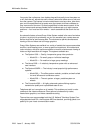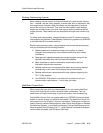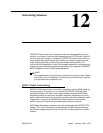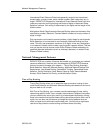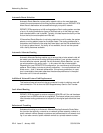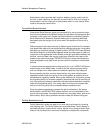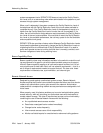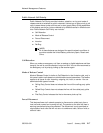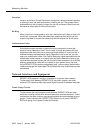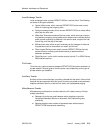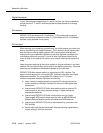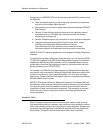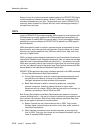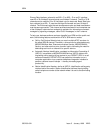
Networking Solutions
555-230-024
12-6 Issue 5 January 1998
system management tools. DEFINITY ECS does not require the Facility Restric-
tion Level to be in an ascending order when administered in the patterns or pref-
erences through system management.
When a call is attempted, the system compares the Facility Restriction Level of
the telephone with the Facility Restriction Level of the trunk routes available to
complete the call. If the Facility Restriction Level of the telephone is equal to or
higher than the Facility Restriction Level of trunks, the call is completed; if it is
lower, the call is blocked on that preference and compared to the Facility Restric-
tion Level of the next route available. If the call fails to match the Facility Restric-
tion Level on the available preferences, the call may queue for the first available
and compatible trunk group.
DEFINITY ECS also provides a feature called Alternate Facility Restriction Levels
that allows the attendant to temporarily change the Facility Restriction Levels on
originating facilities to a different set of Facility Restriction Levels. It is used to
grant users greater access to trunking facilities than is normally provided, such
as when charges are lower during evening hours.
Bearer Capability Class
Bearer capability class uses information available in the switch to match the call-
ing requirements of a specific call with the best available resources to support
that call. Bearer capability applies to all calls and support facilities, but is of pri-
mary significance for data calls. Each call has a bearer requirement — that is, a
set or range of requirements needed to support that call. For data calls. these
requirements include data rate, synchronization, and channel type.
Remote Network Access
Designed to guard against unauthorized system access, Remote Network
Access requires that a caller from outside the system dial either one of ten barrier
codes or an authorization code to gain access to the network. Authorization
codes and their corresponding network-access permissions are assigned to indi-
vidual users.
When properly used, this feature enables you to control and administer system
access security, while still providing your authorized users with the benefits of
remote network access. The risks of unauthorized access can be minimized by
combining the use of Remote Network Access with the following:
■ An unpublished remote access number
■ Deactivate unassigned barrier codes immediately
■ Change barrier codes frequently
■ Inform remote access users of their responsibility
■ Monitor call detail reports for unauthorized or abnormal calling patterns



